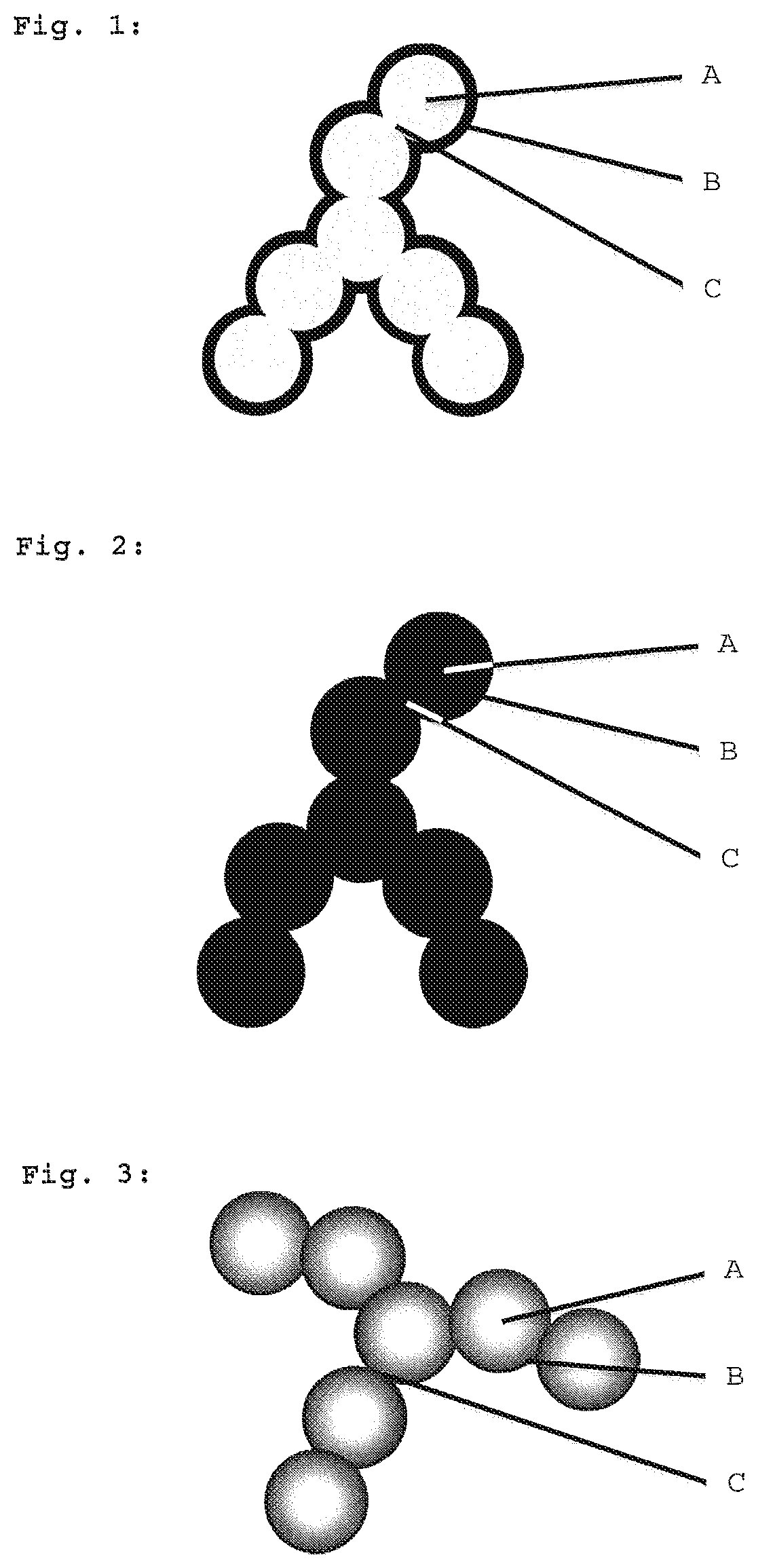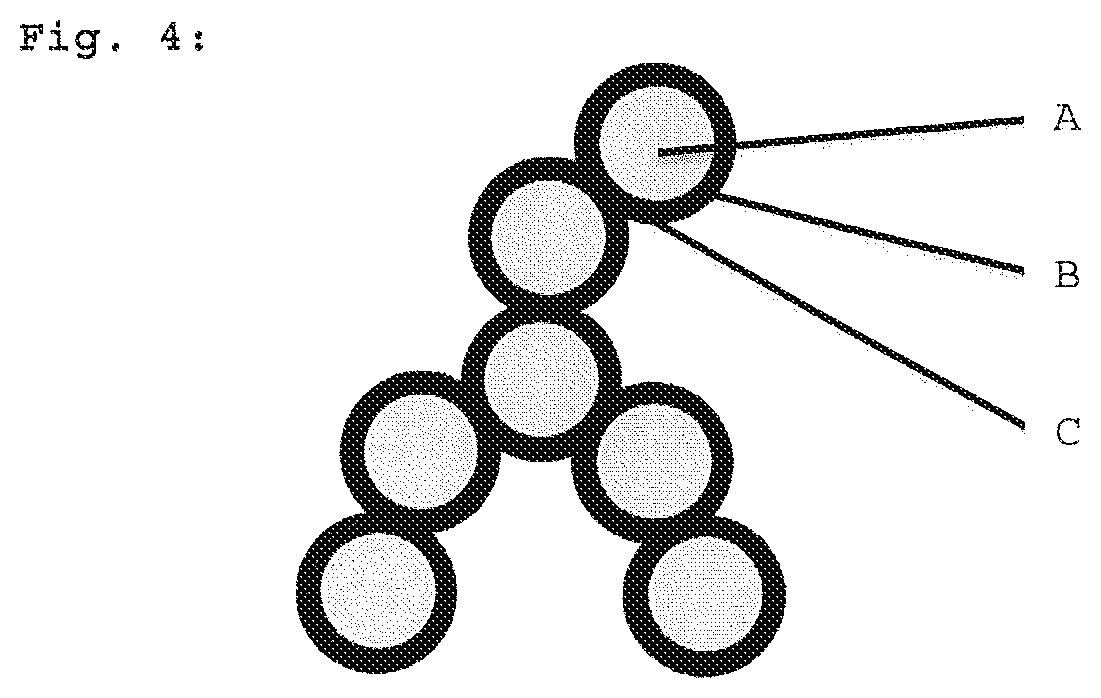Hydrophobic aerogels comprising low occupancy of monofunctional units
a monofunctional unit and hydrogel technology, applied in the field of gels, can solve the problems of complex solvent replacement steps, crinkly and brittle, etc., and achieve the effect of accelerating mass transfer and appreciable solubility
- Summary
- Abstract
- Description
- Claims
- Application Information
AI Technical Summary
Benefits of technology
Problems solved by technology
Method used
Image
Examples
example 1
n of an Aerogel from Water Glass and Potassium Methylsiliconate (by Sequential Addition of Potassium Methylsiliconate)
[0140]In a glass beaker, 55.5 g of water and 55.5 g of water glass were mixed and cooled to 10° C. in an ice bath. In a second glass beaker, 55.5 g of water and 55.5 g of potassium methylsiliconate were mixed and cooled to 10° C. in an ice bath. 200 g of hydrochloric acid (7.5% by weight) were placed in a screw-cap bottle, cooled to below 10° C. in an ice bath and stirred at 500 rpm by means of a magnetic stirrer.
[0141]The cooled water glass solution was added slowly via a dropping funnel to the hydrochloric acid solution while stirring. During the introduction, care was taken to ensure that the dripping rate was so slow that the temperature did not rise above 10° C. After the addition, the reaction mixture was stirred further at room temperature for two hours and cooled back to below 10° C. in an ice bath before addition of the second component. The potassium methyl...
example 2
n of an Aerogel from Bindzil 17 / 750 and Potassium Methylsiliconate
[0152]In a closable glass bottle, 56.6 g of SiO2 nanosol were added while stirring to a solution which was composed of 4.8 g of HCl solution (32% by weight) and 34 g of water and had been cooled to 0° C. 7.6 g of potassium methylsiliconate were subsequently added over a period of 10 minutes while cooling to 0° C., so that a pH of 8 was established. The sample was subsequently warmed to RT, as a result of which gel formation commenced, and this was concluded within 45 minutes. The resulting lyogel, which in this case was a hydrogel, was incubated at 60° C. for 48 hours to effect aging, subsequently broken up in pieces smaller than 5 mm as described in example 1 and the totality of the gel pieces was divided into two parts.
[0153]One part (about 50 g) of the gel pieces was, in order to determine the C content before surface modification, washed with water and the solid was dried to constant weight at 120° C. and 10 mbar ...
example 3
n of an Aerogel from Bindzil 17 / 750, Methyltriethoxysilane and Dimethyldiethoxysilane
[0194]In a closable glass bottle, 120 g of SiO2 nanosol were added while stirring to a solution which was composed of 3.2 g of HCl solution (32% by weight) and 22.6 g of water and had been cooled to 0° C., with a pH of 2.5 being established. A mixture of 15.2 g of methyltriethoxysilane and 6.3 g of dimethyldiethoxysilane was subsequently added over a period of 10 minutes while cooling to 0° C. and the mixture was stirred for about 30 minutes. A pH of 8 was subsequently set using an ammonia solution (1 M). The sample was subsequently warmed to RT, as a result of which gel formation commenced and this was concluded within 45 minutes. The resulting lyogel was incubated at 60° C. for 48 hours to effect aging, subsequently broken up into pieces smaller than 5 mm as described in example 1 and the totality of the gel pieces was divided into two parts.
[0195]One part (about 50 g) of the gel pieces was, to de...
PUM
| Property | Measurement | Unit |
|---|---|---|
| Percent by mass | aaaaa | aaaaa |
| Diameter | aaaaa | aaaaa |
| Density | aaaaa | aaaaa |
Abstract
Description
Claims
Application Information
 Login to View More
Login to View More - R&D
- Intellectual Property
- Life Sciences
- Materials
- Tech Scout
- Unparalleled Data Quality
- Higher Quality Content
- 60% Fewer Hallucinations
Browse by: Latest US Patents, China's latest patents, Technical Efficacy Thesaurus, Application Domain, Technology Topic, Popular Technical Reports.
© 2025 PatSnap. All rights reserved.Legal|Privacy policy|Modern Slavery Act Transparency Statement|Sitemap|About US| Contact US: help@patsnap.com


